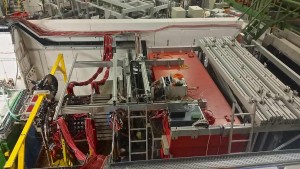
Photoproduction of mesons as a probe of the excitation structure of the nucleon has been exploited since the 1960s. The use of GeV-range energy polarised tagged photon beams at high duty cycle electron accelerators in combination with large acceptance detectors, like CLAS and GLUEX at Jefferson Laboratory, A2 at MAMI, Crystal Barrel at ELSA, GrAAL at ESRF, and LEPS at SPring8, has in recent years put the technique on par with pion scattering to unravel the complex nucleon excitation patterns, allowing for a better understanding of the Quantum Chromodynamics in the non-perturbative regime.
The experiments have significantly added to our understanding of baryon excitations. Nevertheless, crucial features of the spectrum still remain unresolved. These are often associated with close-by photoreaction thresholds, for example the S11(1535) resonance close to the ηN and KΛ thresholds, or the Λ(1405) at the KN threshold. Moreover, unexpected and hitherto unexplained structures are observed in photoproduction: examples are a narrow peak in η photoproduction off the neutron at the almost degenerate KΣ and ωN thresholds, or a cusp-like fall off of the forward (and total) cross section in K0s Σ+ photoproduction at the K*Σ threshold.
The BGOOD detector is especially designed to investigate meson photoproduction at thresholds and at low momentum transfer, t , to the residual hadronic system. It consists of two main parts: a forward large aperture magnetic spectrometer, with an Open Dipole magnet, and a central detector with a BGO crystal calorimeter, both eponymous for the whole experiment. BGOOD is situated at the ELSA electron accelerator facility at the Rheinische Friedrich-Wilhelms-Universität, Bonn, Germany. Using the ELSA electron beam, an energy tagged bremsstrahlung photon beam is produced, impinging upon either a cryogenic liquid hydrogen or deuterium target, or alternatively, a solid state target such as carbon, at the centre of the BGO calorimeter. An amorphous bremsstrahlung radiator yields unpolarised photon beams, with linearly polarised photon beams generated by coherent bremsstrahlung using a diamond crystal radiator. Instantaneous tagged photon intensities of 25MHz are routinely achieved in the energy range (10-90)% of the incident electron beam energy.
 INFN-LNF Laboratori Nazionali di Frascati
INFN-LNF Laboratori Nazionali di Frascati